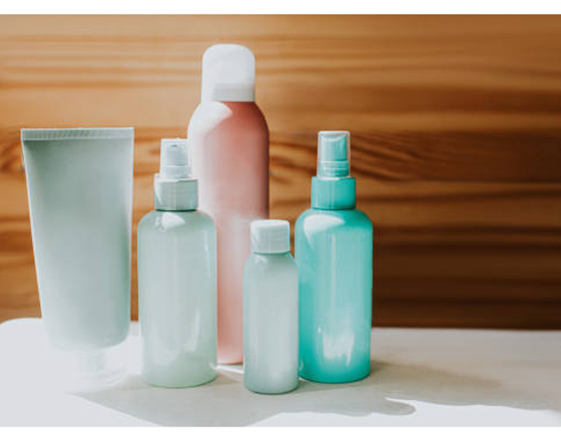Some of us wash our hair every day, while others do so only occasionally, but how much do we understand what happens when we use shampoo? Well, it is a product that cleans and conditions your hair. The shampoo is one of those necessities that most of us use each day.
What is the main mechanism of shampoos?
Shampoo aids water in removing dirt, debris, and odors such as smoke or sweat. It can also be used to get rid of oil. Hair derives its oil from sebaceous glands, which secrete sebum, a type of oil that keeps hair nourished.
Also, hydrated hair is less prone to breaking or seeming dry and frizzy. For today’s consumers, eliminating all the debris or dirt from your hair isn’t enough. This is why shampoo’s main goal is to remove debris and dust from your hair before conditioning it. This is commonly accomplished by combining two different types of components in the shampoo.
An average head has between 100,000 and 150,000 hairs of varying lengths, forms, and styles. It’s crucial to strike a balance between gentleness and cleanliness. Conditioning agents make hair easier to maintain and prevent fly-away. These must be applied to the hair during the shampooing process, i.e., while it is being cleaned. They must also be applied at a level that makes the hair manageable and clean-feeling.
The advantage of today’s shampoo invention
The advent of true 2-in-1 shampoo provides the entire cleaning and conditioning of a distinct shampoo and conditioner. This product is the most significant advance in the last 20 years. These have been so effective in reaching customer expectations. This shampoo now includes a significant amount of conditioning.
Highly viscous silicones were used as conditioning components in the original 2 in 1s. Improved silicones and the inclusion of fatty alcohols have now surpassed these. The shampoos are designed for a variety of hair types, each with its own unique set of requirements.
Normal hair, for example, necessitates cleansing and control. Colored hair requires more conditioning. A unique fatty acid is eliminated from the hair surface during coloring.
The benefits of using a shampoo:
Here are several major reasons why shampoo is necessary:
Shampoo can aid in the prevention of hair loss.
Hair loss can be caused by a variety of factors. Hair loss can be caused by dandruff and psoriasis. DHT, a hormone, can cause hair follicles to shrink. Shampoos have been developed to address these concerns. Shampoos with anti-fungal ingredients can help with dandruff.
A shampoo containing a topical steroid can help with psoriasis-related hair loss. DHT-blocking shampoos are also available. Topical hair loss therapies, such as shampoo, have fewer side effects than drugs.
Cortisol levels are reduced when you wash your hair with shampoo.
Cortisol, also known as the “stress hormone,” is a well-known hormone. It can create major health concerns if its levels are too high for too long. According to studies, washing your hair can lower cortisol levels in your hair follicles.
If your hair is thinning due to stress, there is good news. It appears that washing with water has a similar impact to washing with shampoo.
Shampoo cleans your hair and scalp.
Sebum, an oily substance, moisturizes your skin and scalp. If you don’t shampoo, the sebum in your hair can build up, making it oilier than you’d like. Sebum attracts macrofauna, which can lead to dandruff and other hair problems.
Shampooing is necessary to remove oil from your scalp as well as any residue from other hair products.
Shampoo ingredients: how does it work?
Surfactants make up the majority of the formula. It’s unusual to find a shampoo with only one surfactant. Some are made to help with cleaning, while others are made to help with lather and rinsing. All the colors were intended to be gentle and non-irritating to the eyes. Surfactants function by lowering the surface tension between water and soil. It allows hair to be “wrapped up” and lifted off.
Surfactant molecules are made up of two components. The first is a polar head group that is drawn to water, and the second is a fatty chain that is attracted to the soil. Fatty chains form rings around each piece of soil because they’re attracted to the water.
The soil particle is eventually lifted away from the hair by the surfactant molecules, which scatter it in the water.
Silicones and fatty alcohols are commonly used as conditioning agents.
Silicones are well-known for their lubricious characteristics, which help untangle hair. Depending on the type of hair and whether it has been colored or permed. They come in a variety of viscosities, ranging from thinner than water to thick fluids. Fatty alcohols condition the skin and aid in the management of static or “fly-away.”
Multifunctional ingredients.
It’s pointless to make a wonderful shampoo if it goes through your fingers as you pour it into your hand! Ingredients that control viscosity or thickness are required in all products, including shampoos. Ingredients are also needed in shampoos to determine how the lather forms and is washed away.
Preservatives are added to prevent bacteria development.
Extra substances for hair protection and strength may be included in the shampoo.
The addition of sunscreens to the product protects the hair, which has no natural mechanisms of repair when exposed to the sun. Aesthetic additives include scents, colors, and pearlized chemicals.
This is to improve the product’s look. These are more than “pleasing fragrances.” They offer a comprehensive in-use experience that engages all the senses. Its purpose is to make shampooing a pleasurable and exciting experience.
Last Thoughts
There is no specific number of times per week that a person should put shampoo on their hair. Expectations for how hair should appear and how frequently a person should wash their hair vary by culture, age, and generation. Washing one’s hair regularly is a personal preference.
This is unlikely to have an impact on their general health.








